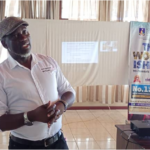Malawi to control Lake Malawi and Shire River levels through improved barrage
Published on September 27, 2012 at 1:41 PM by FACE OF MALAWI
Technical findings of a feasibility study done by the Malawi? Ministry of Irrigation and Water Development have weighed in favour of?the improvement of the Liwonde barrage, christened after Malawi’s ?first president Kamuzu Banda as the Kamuzu Barrage, on the country’s?longest and largest river, Shire.
The decision has been made against the proposed construction of a high?dam downstream at Kholombizo, construction of a completely new barrage?at Liwonde and construction of a pumping barrage at Samama on the?mouth of Lake Malawi.
Upgrading works of the 43 year old barrage are expected to accommodate?the regulation of the flow of the Shire River and Lake Malawi water?levels on the present bridge and construction of a new bridge?downstream to accommodate vehicle traffic and public safety?requirements.
The report says the Kamuzu Barrage can only be used for regulating?water flow and lake levels within a limited range compared to the?historically recorded lake levels. In the lower range of lake levels,?the barrage can be used to regulate the balance between water level in?Lake Malombe, a swelling of the shire as it leaves Lake Malawi, and?water flow to the downstream users. It is the flow capacity of the Shire River that determines the lake level.
For lake levels below 471.5 m/s, the report says, there will be no?water flowing out of Lake Malawi, and the operation of the barrage?would have no effect on the lake level. For such low Lake Levels it?would only be a combination of a Pumping Station at Samama and the?Kamuzu Barrage that could influence the balance between water level in?Lake Malombe and water supply to downstream users.
The existing barrage which comprises 14 radial water gates also?shoulders a highway crossing over the bridge. The report findings indicate the need to separate traffic passing over?the barrage from its water regulation operations since the road?passing over the barrage is a main road, with vehicular heavy traffic?including busses, trucks, and cars as well as pedestrians and?cyclists.
According to the study, the existing barrage has a water control range?of 473.5 m/s and 475.32 masl and it is reported that once water levels?fall below 473.5 m/s then the gates are fully opened and when they?rise above 475.32 m/s they will also require to be fully opened. The?report says these water levels refer to Lake Malawi water levels. The corresponding water levels at the barrage vary depending on flow?and Lake Malawi water levels.
The highest corresponding regulated?water level at the barrage is approximately 0.10 m. The study requires that the upgraded barrage should enable a raise of?the regulated water level at Lake Malawi (Lake Level) from 473.32 m/s?to 475.50 m/s or more depending on the reviews of water level and?environmental aspects.
The proposed raise of water levels has been indicated to be within the?range of 20 – 40 cm above the present water levels. The records of lake level during the entire 20th Century show?variations of the free water, from more than +1400 m/s in 1980 to?minus 400 m/s in 1993.
Free water is the amount of change in the lake water storage and the?out-flow measured in unit m/s. The recorded lake levels varied from a low of 469.94 m/s in 1915 to a?high of 477.25 m/s in 1980, registering a maximum difference of 8.34?m. At 471.5 m/s the outflow to Shire River stops, as it did for 27 years?between 1908 and 1935. During the entire century there were?considerable variations between the two extreme values.
According to the new study, the existing barrage has controlled the?range of lake levels between 473.5m/s and 475.32 m/s and the proposed?upgraded Barrage is expected to increase the limit water control by?20-40 cm, raising the Lake Malawi levels between 475.52 – 475.72 m/s. “The difference in Lake Malawi water level and water level just?upstream of the Barrage varies depending on flow and Lake water?levels.
According to the calculations of previously published reports, the?difference may vary between 0.1m and more than 1m for flows varying?between 180 m /s and 600 m /s depending on Lake Levels. “This means that the highest water level at the Barrage at flow 180?m/s could be as high as 475,62 m/s if the highest acceptable regulated?water level at Lake Malawi is increased to 475.72 m/s,” says the?report.
The report says the existing pillars of the barrage are structurally?fit to continue supporting the functions of the barrage. The study was conducted as a first step towards the second phase of?the National Water Development Project II (NWDP II), a follow up to?NWDP I among other studies conducted the integrated Water Resources?Management Plan for the Lake Malawi and Shire River Study.
The Integrated Water Resources Management Plan for the Lake Malawi and?Shire River Study (also known as the Lake Malawi Level Control (LMLC))?investigated alternatives for regulating Lake Malawi level and Shire?River system. Currently, the Water Resources Board is revising the Water Resources?Act (1969) to catch up with the regional and international trends in?water resources management


